Indoor air-purifying plants in Singapore
Little-known fact: furniture polish, plastic, and dyes used to make our furniture and wall paint actually release small amounts of harmful, irritating gases, adding to the ones that we already unwittingly inhale outdoors. Fortunately, Mother Nature has an alternative to air purifiers to guard ourselves from these gases, in the form of these indoor air-purifying plants.
You can grow them to purify the air, get rid of dust particles, and even humidify a room.
Table of Contents
- Indoor air-purifying plants in Singapore
- 1. Chrysanthemum – Absorbs ammonia & benzene in cleaning products
- 2. Barberton daisy – Removes toxins from common household cleansers
- 3. Bird of paradise – Also offers natural sound-proofing
- 4. Monstera plant – Humidifies dry air
- 5. Areca palm – Absorbs harmful gases from wooden furniture
- 6. Rubber plant – Safe for people with pollen allergies
- 7. Spider plant – Safe for pets
- 8. Snake plant – Converts carbon dioxide to oxygen at night time
- 9. Aloe vera – As effective as 9 electric air ionisers
- 10. Money plant – Lucky plant that symbolises success & wealth
- 11. Bamboo palm – Cleans dust with negative ions
- 12. Peace lily – Grows well in dim rooms
- 13. Dendrobium orchids – Huge variety of colours to choose from
1. Chrysanthemum – Absorbs ammonia & benzene in cleaning products
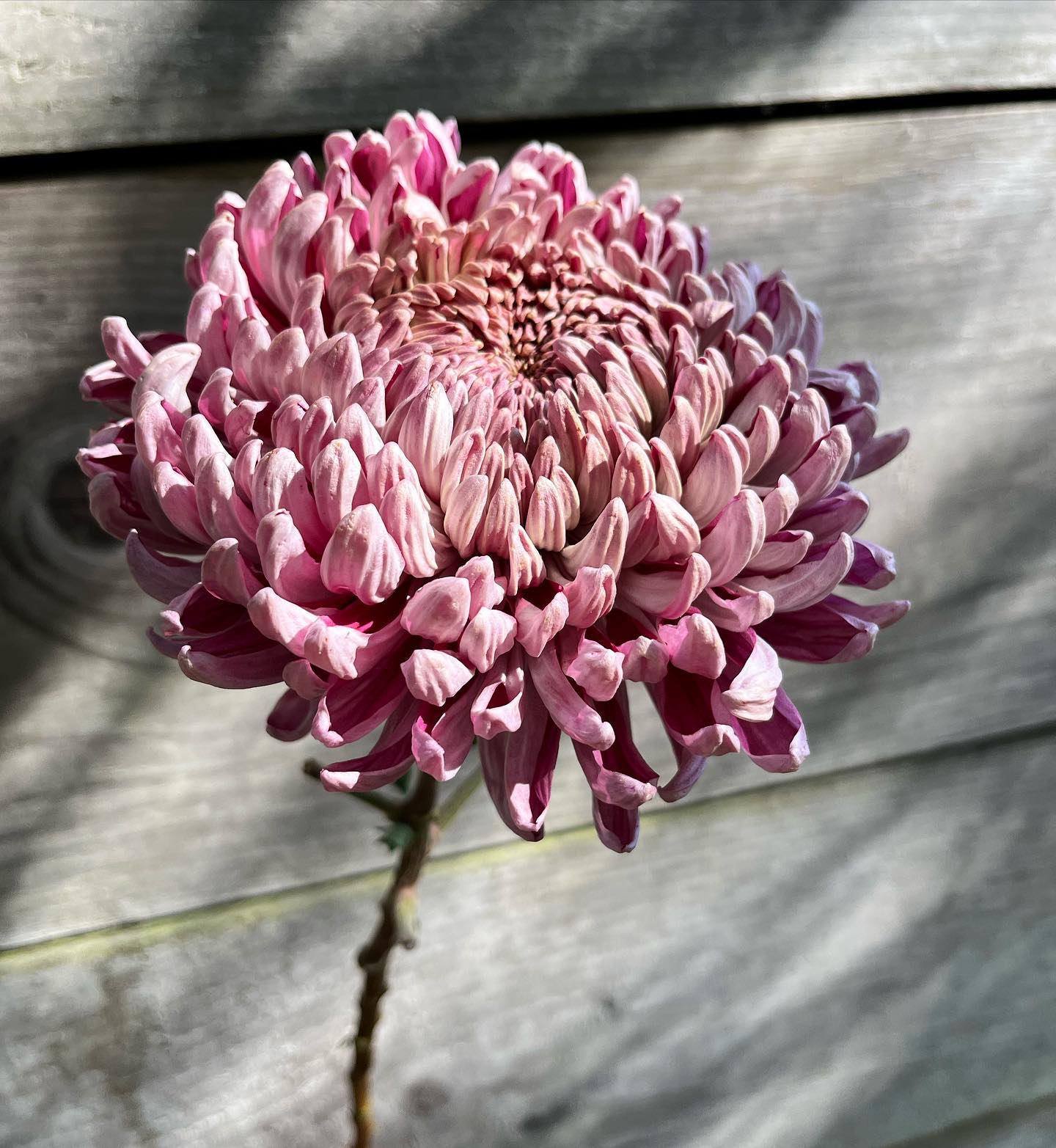
Image credit: @wildryefarm via Instagram
We’re all familiar with chrysanthemums – the flower buds are steeped in hot water to make a soothing tea that lowers blood pressure. But it’s not just the petals that are beneficial. If you have a bouquet of them, the plant is able to remove chemicals like ammonia and benzene usually found in window cleaners and some glue.
Chrysanthemum plants grow best in humid weather, so leave them by a window with lots of sunlight and they should be fine. Just remember to keep the soil moist, so check and water frequently during dry spells to prevent the plant from wilting.
Amount of care needed: Moderate
2. Barberton daisy – Removes toxins from common household cleansers
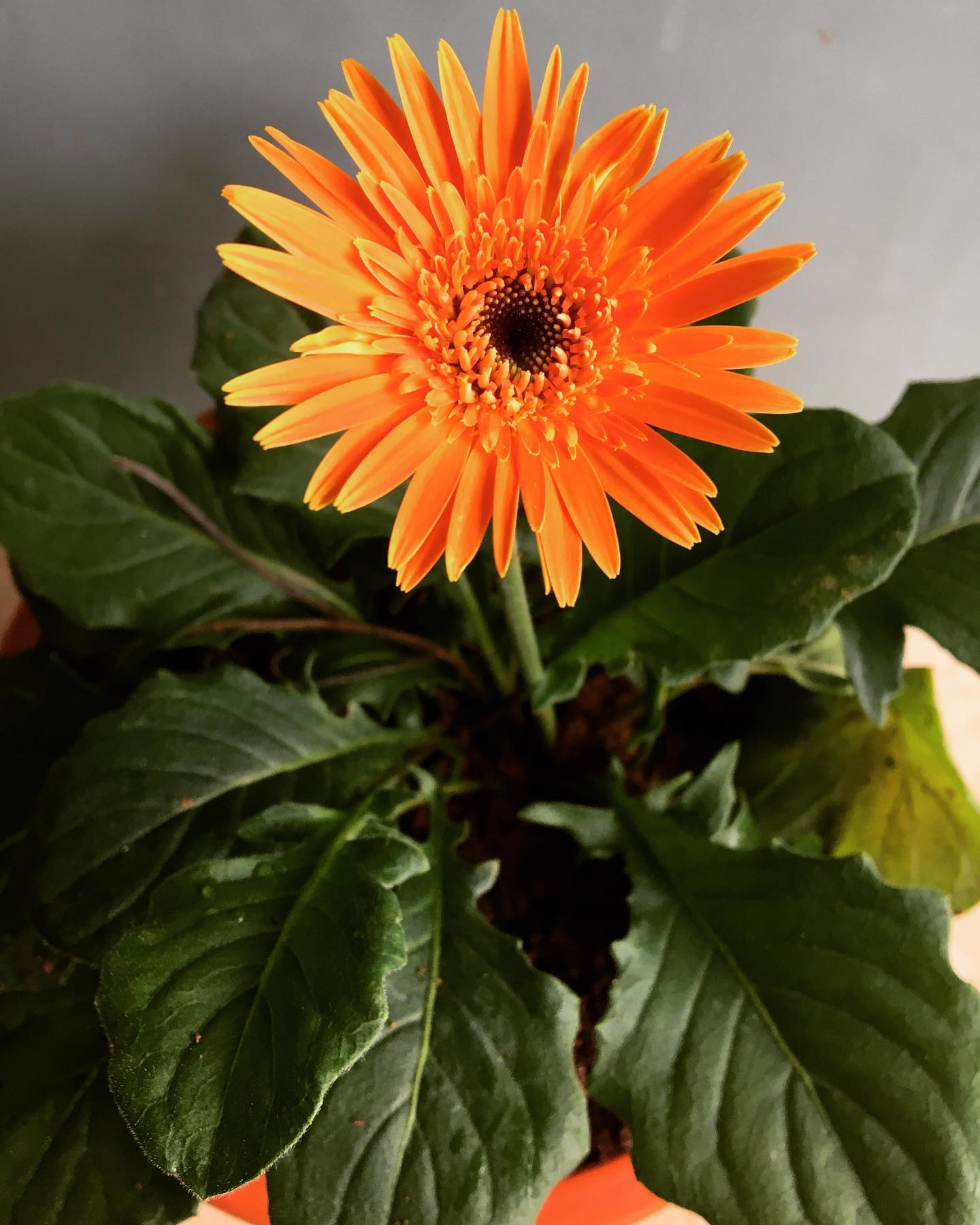
Image credit: @shaminivenkat via Instagram
Don’t be fooled by their appearance, these daisies do way more than brighten up rooms with bursts of colour. The Barberton daisy, which is more commonly known as the gerbera in Singapore, is able to remove chemicals like formaldehyde and trichloroethylene. You’ll find these in things like paint and aerosol cleaners.
This plant can thrive in Singapore’s climate, as they love sunlight. They don’t require daily watering, but will need a top up whenever the soil starts to feel dry. To ensure they’re healthy, fertilise with nitrogen, phosphorus, and potassium once a month.
Amount of care needed: Medium
3. Bird of paradise – Also offers natural sound-proofing
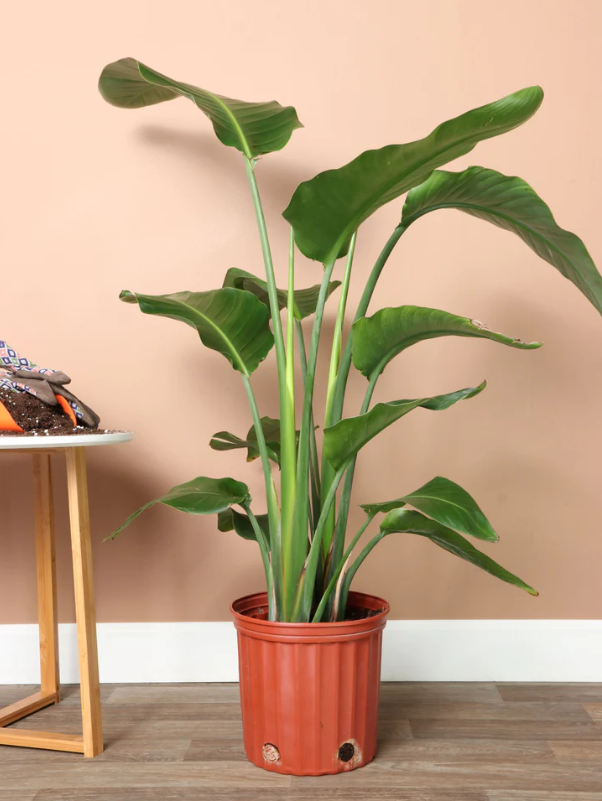
A baby bird of paradise plant.
Image credit: Dahing Plants
Not to be confused with Bird Paradise at Mandai, this plant is known for its oblong leaves and tall stalks. The bird of paradise plant grows up to 1.8m, and it’s been known to help reduce ambient noise, making it a natural sound-proofing solution. It’s also a great statement piece to have in your living room, thanks to its sheer size.
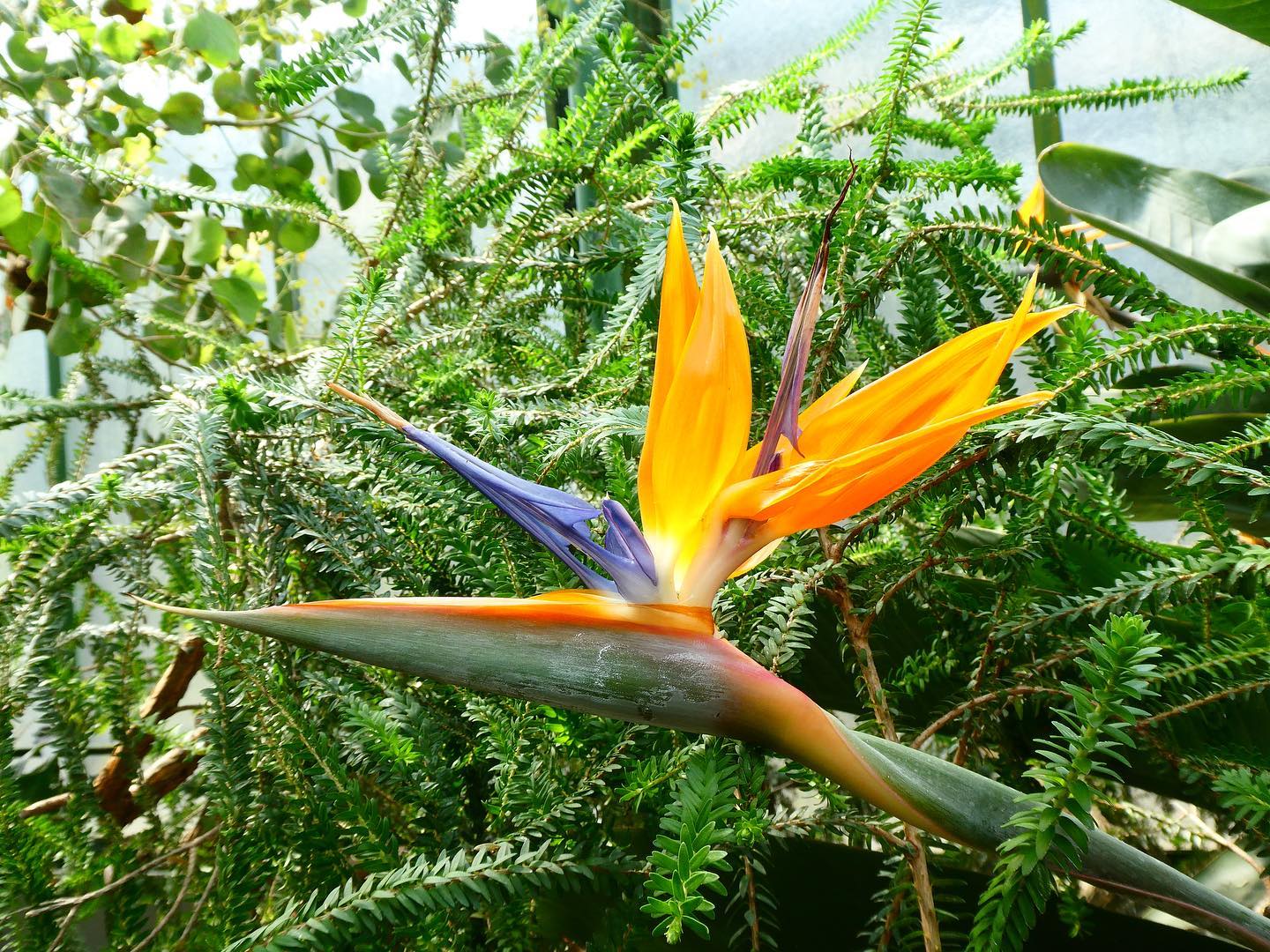
The flowers are brightly coloured and resemble a bird mid-flight.
Image credit: @muenchen.natur via Instagram
The plant brings about health benefits too. It absorbs harmful compounds like benzene, as well as dust and pollen so those who suffer from hay fever will find having a bird of paradise plant useful. This species thrives in sunny spots, and all you have to do is ensure the soil and leaves are moist and you’ll be good to go.
Amount of care needed: Low
4. Monstera plant – Humidifies dry air
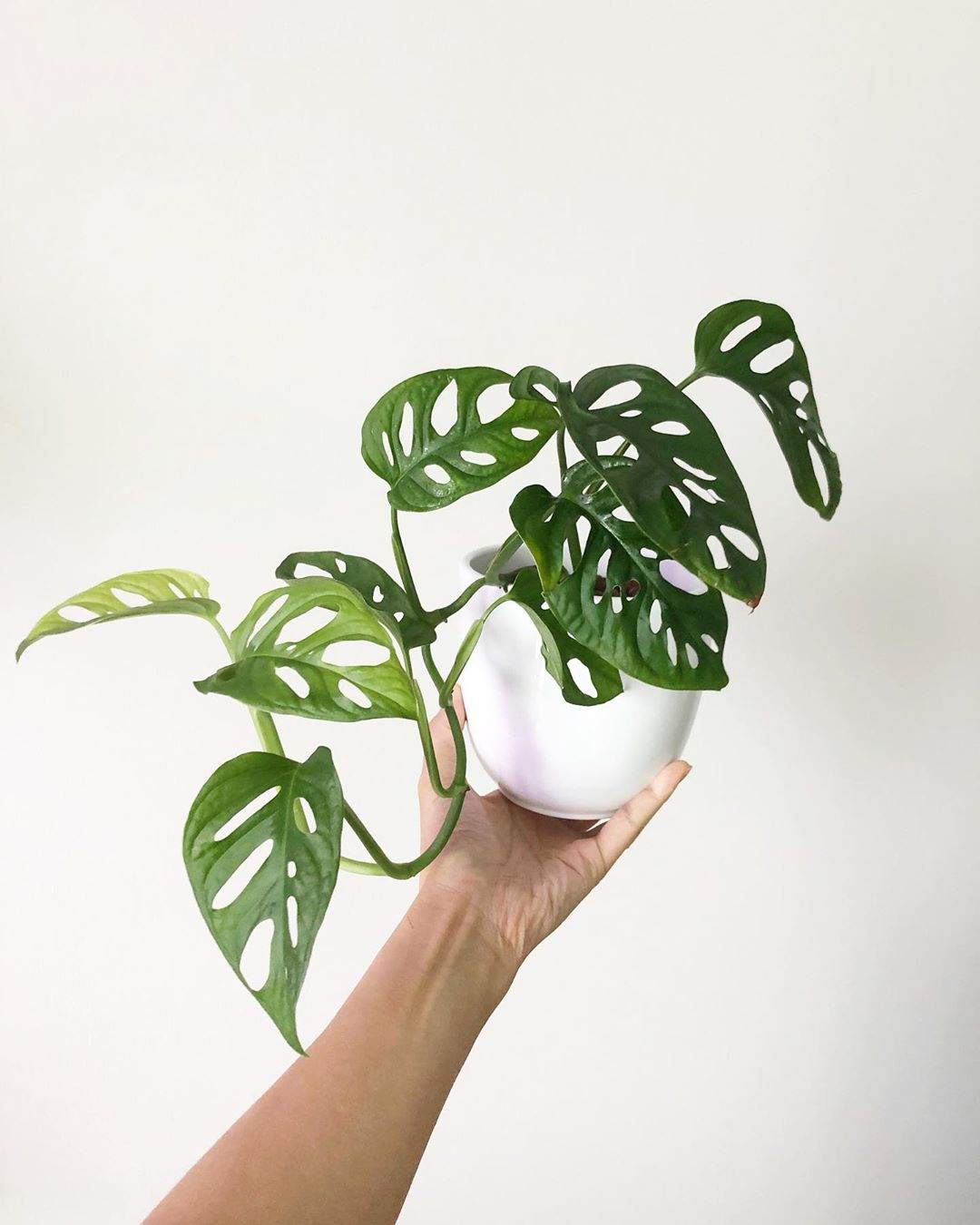
Image credit: @platinum.flora via Instagram
This humidifier doesn’t run on electricity. To relieve dry skin or throat irritation due to snoring, the monstera plant can add water vapour to your bedroom air.
Also known as the swiss cheese plant for its holey leaves, it’s all the rage on Instagram aesthetic shots. Even those lacking a green thumb can easily grow new plants from cuttings in water. The new Far East Flora Centre even has a few varieties of monstera to get you started.
Amount of care needed: Low
5. Areca palm – Absorbs harmful gases from wooden furniture
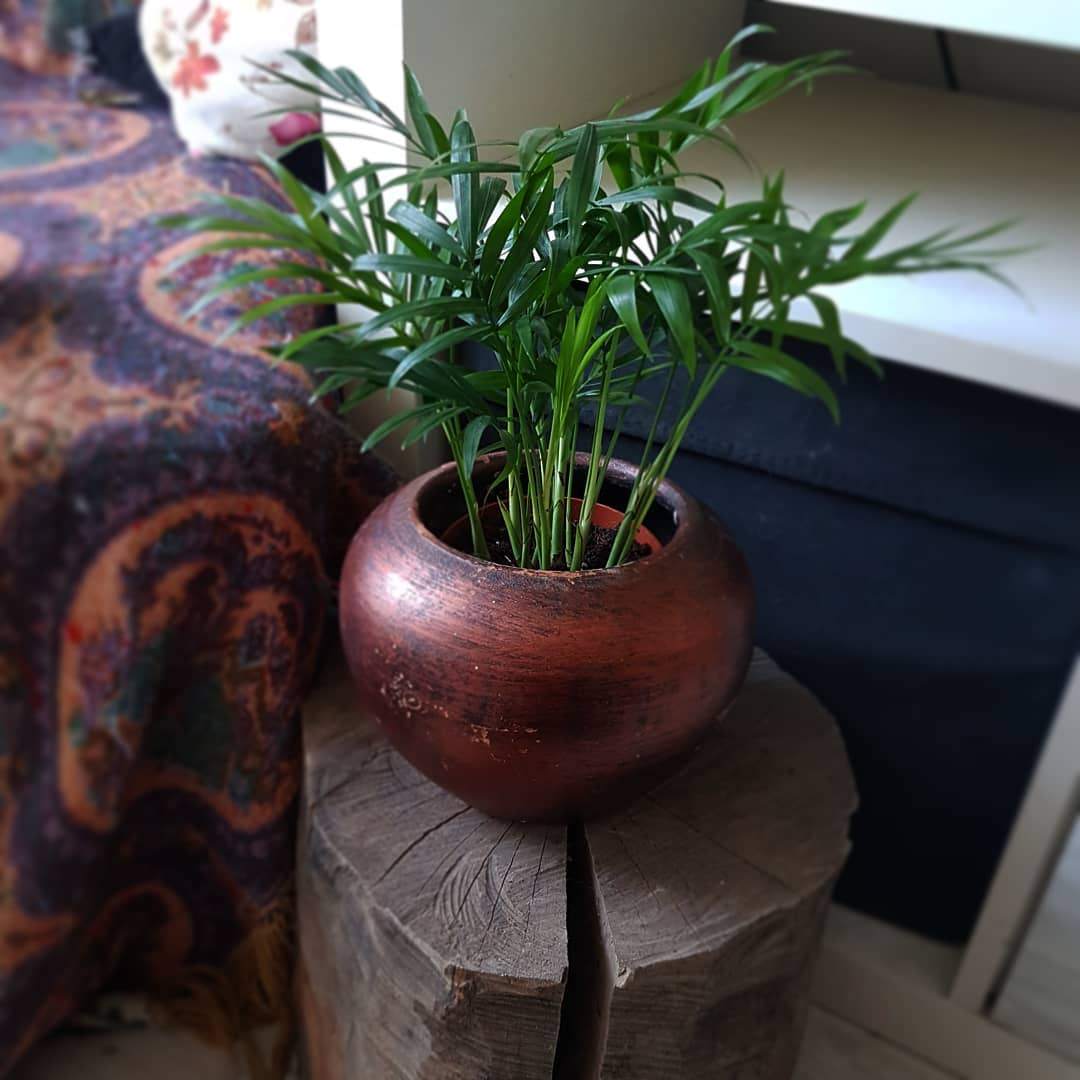
Image credit: @xninkasii via Instagram
Anyone who’s had a manicure or hair treatment will be familiar with that unmistakable salon smell in the air. That’s the smell from acetone in nail polish and hair products that irritates our eyes and lungs. But many don’t know that small amounts of this gas are also slowly released from the varnish on wooden furniture.
So if you or your family are wooden furniture aficionados, this stylish areca palm is a good addition to absorb acetone and also other gases from furniture and dyes that cause skin irritation, fetal disorders, and cancer.
Add some fertiliser pellets to the soil that nourish the plant and help its roots breathe, improving its air-filtering abilities.
Amount of care needed: Moderate
6. Rubber plant – Safe for people with pollen allergies
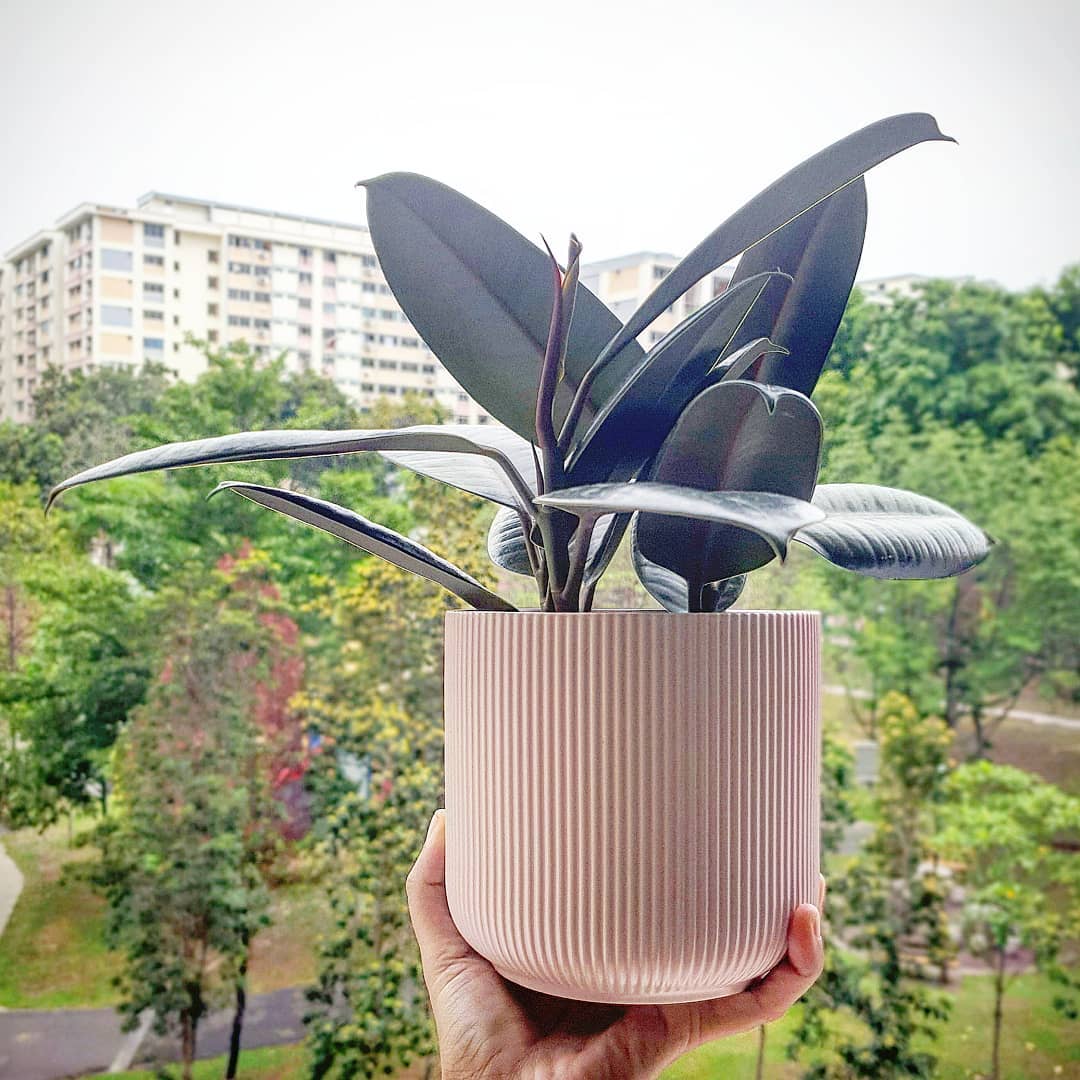
Image credit: @kitsune.26 via Instagram
Pollen allergy sufferers might fire off a volley of sneezes and start tearing up against their will when they’re simply trying to enjoy outdoor greenery. But they should at least be able to breathe without swollen sinuses in their own home. Go for a rubber plant to cleanse the air if that describes you, because its flowers and fruits don’t grow often when it’s potted and kept indoors.
Rubber plants remove formaldehyde, carbon dioxide, and carbon monoxide from the air, perfect for newly painted or renovated flats, or rooms that face busy expressways. These indoor air-purifying plants also thrive on neglect and actually like drier soil, so they’re hard to kill and can be watered only once a week.
Amount of care needed: Low
7. Spider plant – Safe for pets
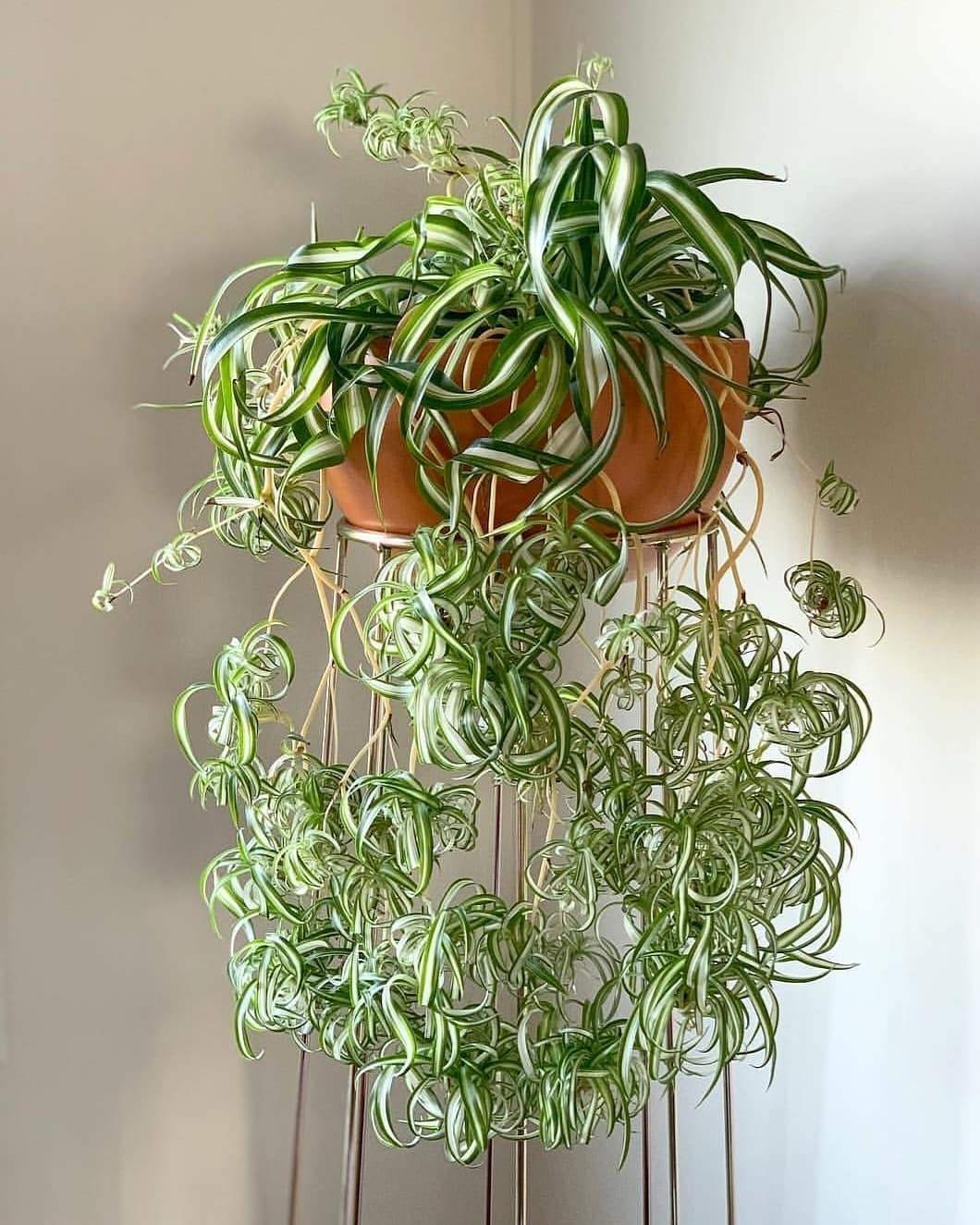
Image credit: @khaneye_sabze_ma via Instagram
The spider plant removes harmful xylene, toluene, and formaldehyde from your air, without harming curious pets who decide that it looks like a tasty snack. Seeing how the spider plant’s baby plants called “spiderettes” dangle from its stems like spiders hanging from a web, it’s no wonder how it got its name.
These indoor air-purifying plants reproduce enthusiastically, so you can repot the spiderettes into smaller pots. Or keep the baby plants attached to their mama, and use them as a room divider or decorative plant in any empty corner that you never knew what to do with.
Amount of care needed: Low
8. Snake plant – Converts carbon dioxide to oxygen at night time
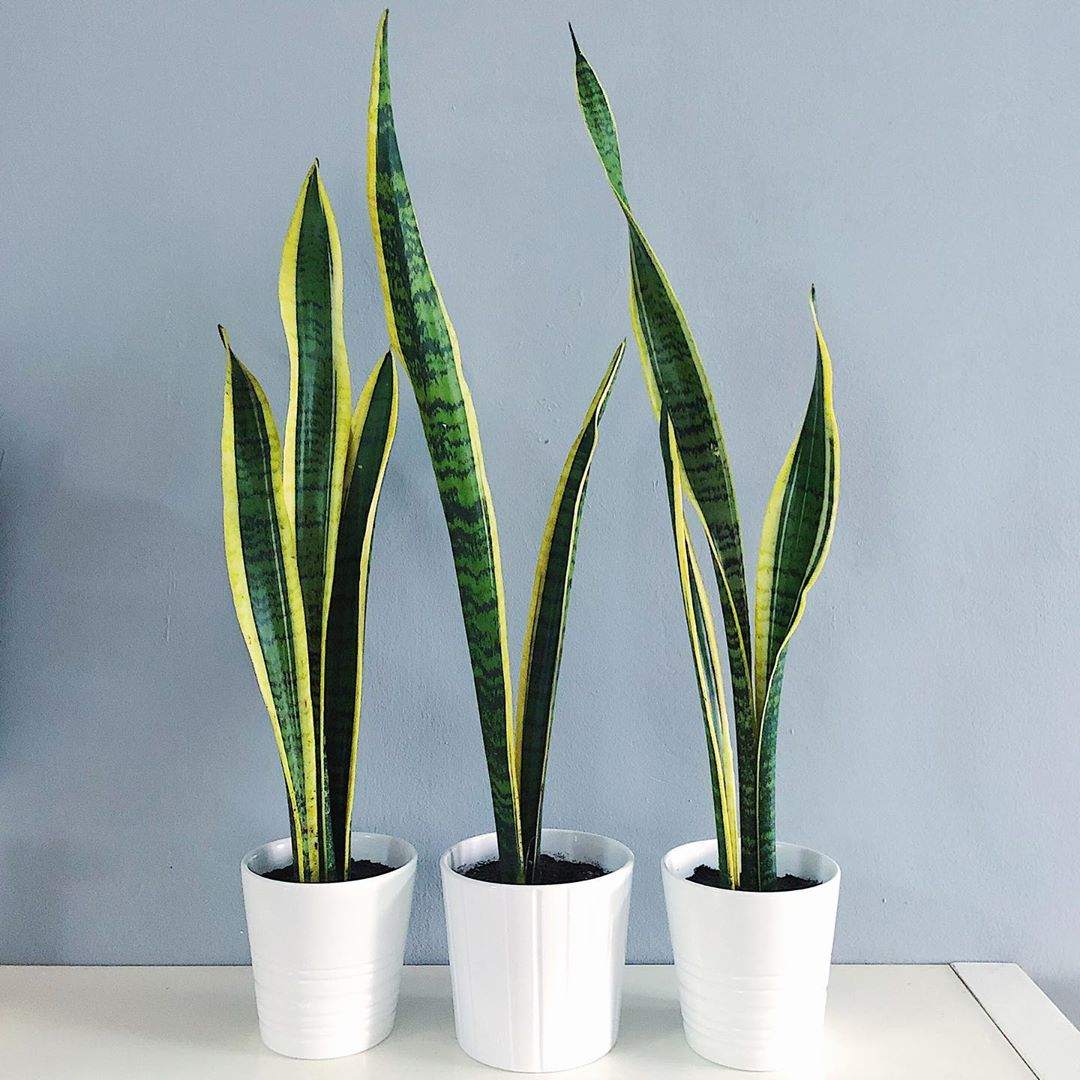
Image credit: @naaf.kl via Instagram
To decorate a bedroom or nursery, get this snake plant that unlike most plants, converts carbon dioxide to oxygen at night. Besides helping sleepers breathe well, it doesn’t hurt that the snake plant also removes harmful gases such as benzene and formaldehyde from the air.
If once a week is too frequent a watering schedule for you, you can give this hardy plant a drink just once every few weeks. Even though it doesn’t need much water, it grows tall so it’s best placed in a pot on the ground.
Amount of care needed: Low
9. Aloe vera – As effective as 9 electric air ionisers
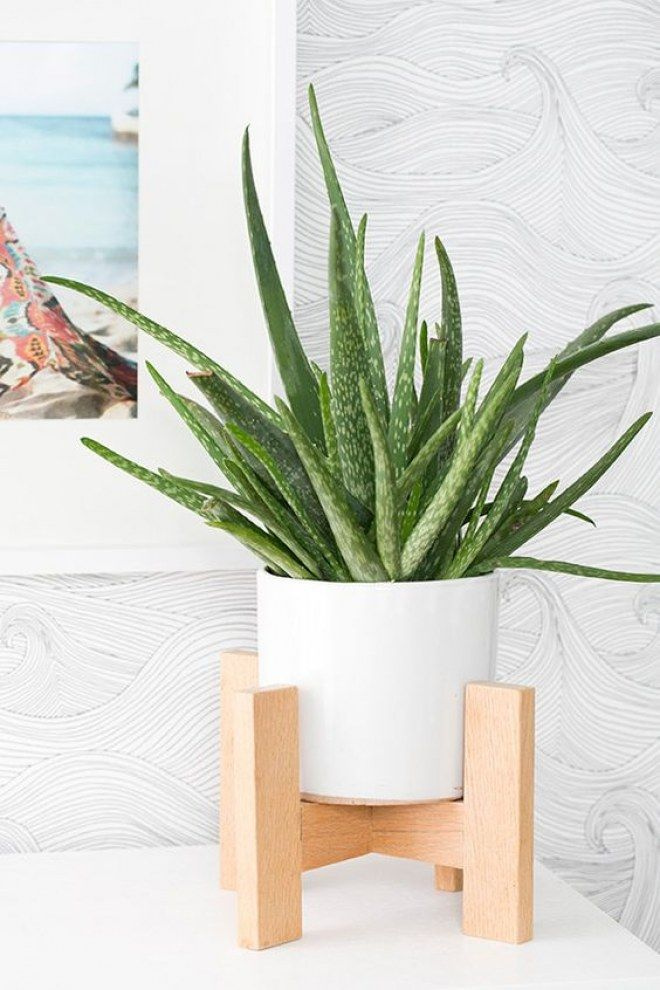
Image credit: Thuy Doan via Pinterest
It’s time to unplug your air purifier and replace it with this succulent, because the air-cleaning effects of 1 aloe vera are said to be better than 9 air purifiers combined. So besides being a skin balm or healthy snack, it can also remove microorganisms from our air.
Even though this is a desert plant, direct sunlight can ironically create black, burnt spots on its leaves, so keep it away from the sun’s rays.
Amount of care needed: Moderate
10. Money plant – Lucky plant that symbolises success & wealth
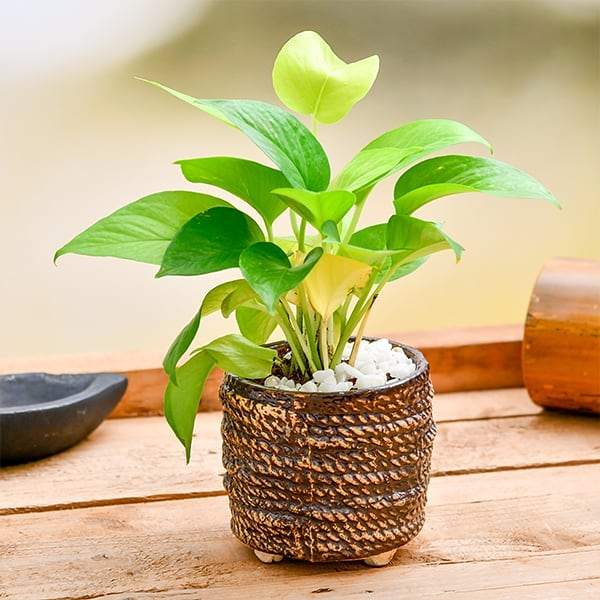
Image credit: @nurserylive_ via Instagram
The money plant is said to boost our feng shui energy, but also has the more tangible effect of producing oxygen at night to freshen the air. It grows easily in soil or water – I have one that has been chilling out in a bowl of nothing but water and pebbles for years.
You can also flex your gardening skills by letting it hang from a basket, or even climb along a rope or net hung across a window. As the plant grows non-stop, it will create a natural “green wall” to shield you from the hot afternoon sun.
Amount of care needed: Low
11. Bamboo palm – Cleans dust with negative ions
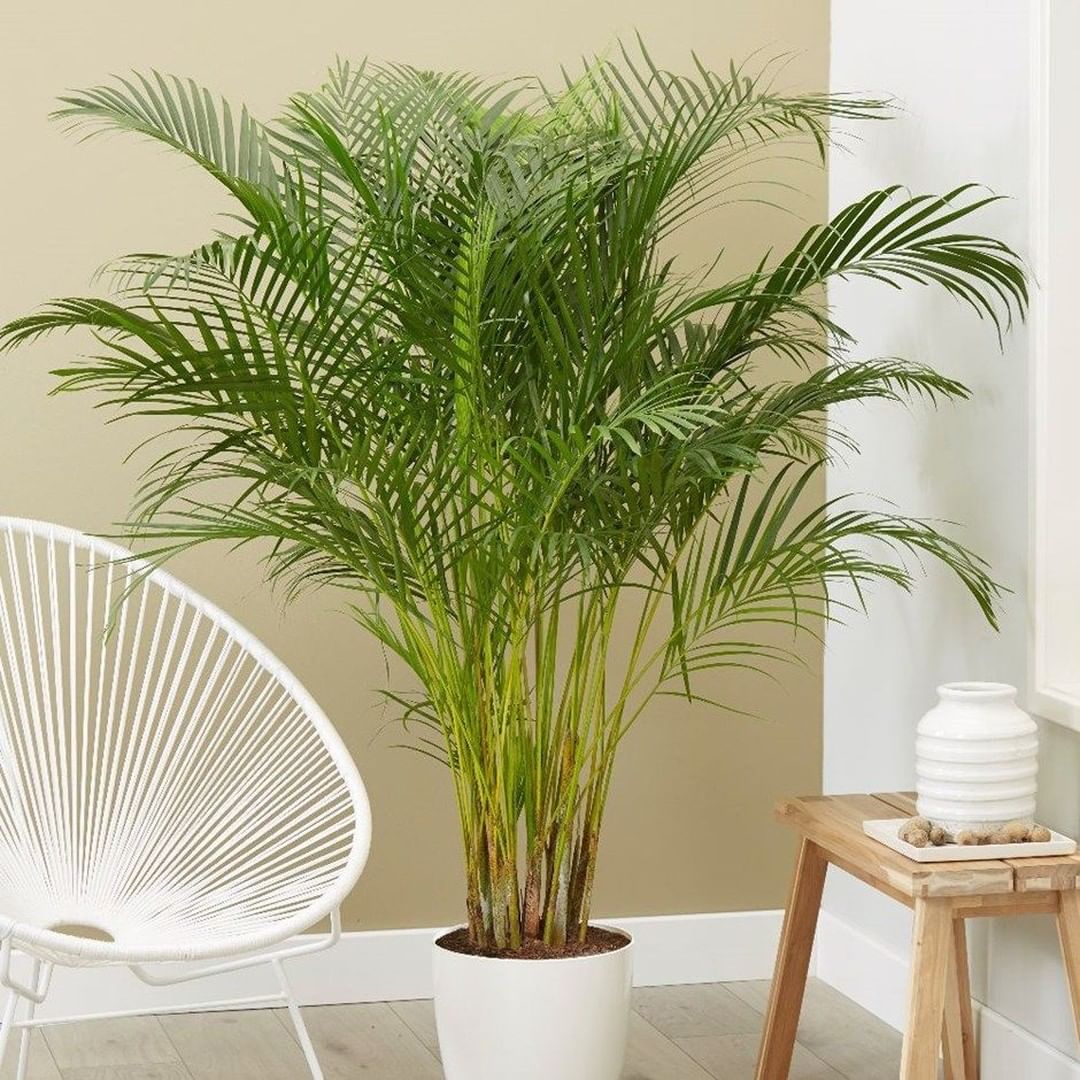
Image credit: @thehanlonrealestateteam via Instagram
Cool science fact: all plants produce negative ions that attach themselves to dust, germs, viruses, and mould spores, making them fall to the ground so they can be swept up easily. The bamboo palm’s larger surface is especially good at pumping out those negative ions, and doesn’t guzzle electricity or produce harmful ozone like electric ionisers do.
Another reason to keep one: the bamboo palm removes benzene and formaldehyde gases. Pet owners should pluck off any berries that may grow regularly because they’re toxic to animals, but the rest of the plant is pet-safe.
Amount of care needed: Moderate
12. Peace lily – Grows well in dim rooms
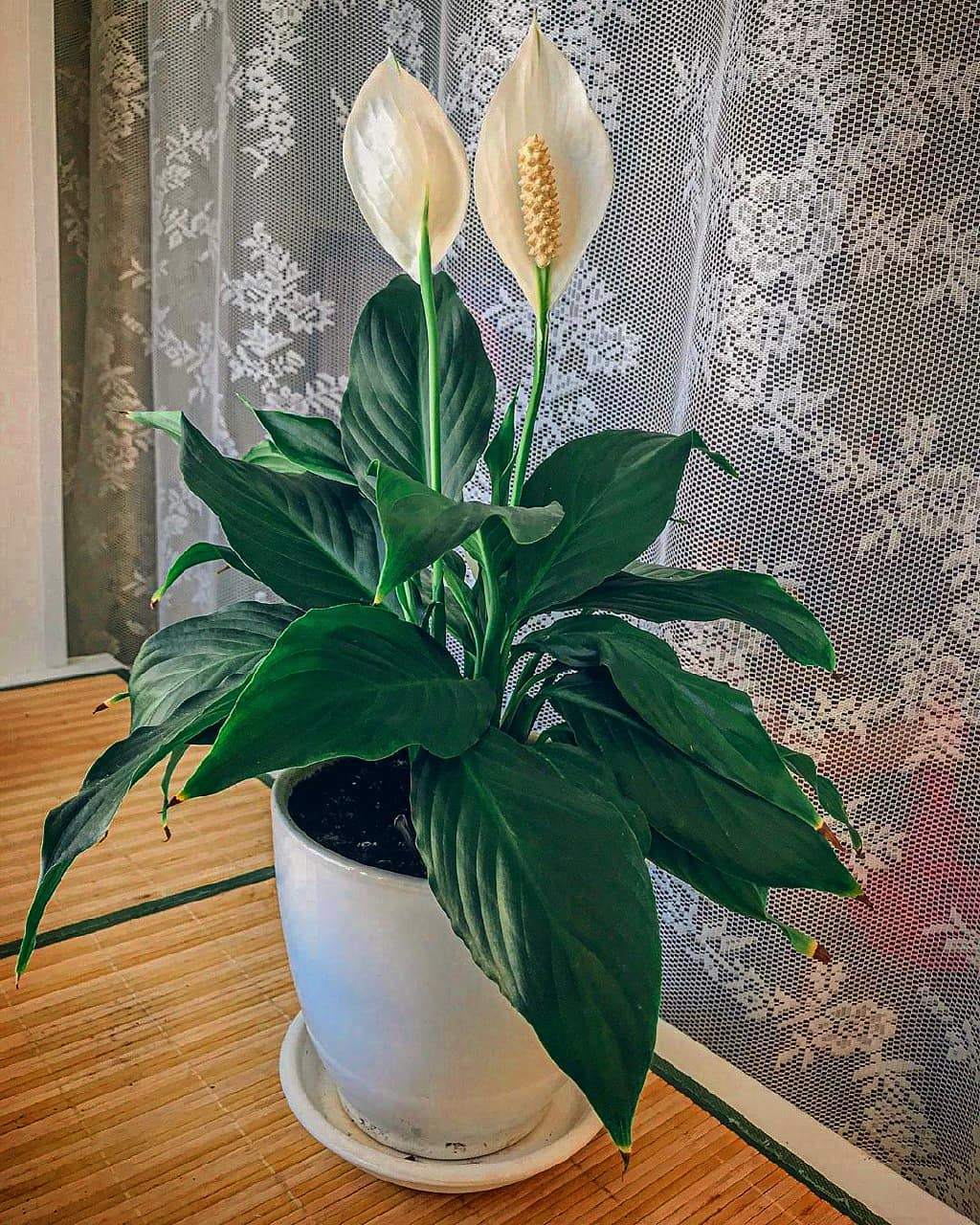
Image credit: @qom_cactus via Instagram
Native to tropical rainforest floors, the peace lily loves dim light, so you can put it in a windowless office or bathroom that could use some decoration with its subtle white flowers. It also removes trichloroethylene gas and ammonia fumes from furniture and paint.
When this graceful plant has had enough nutrients or water, it’ll subtly droop its leaves, so move it into a new pot for better drainage.
Amount of care needed: Moderate
13. Dendrobium orchids – Huge variety of colours to choose from

Image adapted from @blossomdurango via Instagram
Dendrobium orchids come in a wide range of shades including purple, pink, yellow, and red, and even multiple shades on the same flower. So whatever your favourite colour is, you’re sure to find a bloom to match. Over 3,000 Dendrobrium species are known to man, and that number keeps growing as gardeners in Singapore and abroad create new hybrids.
Besides looking glamorous, they also clean up xylene, toluene, chloroform, and acetone fumes released by beauty products, so your dressing table or bathroom is an ideal spot to place them.
Orchids are notoriously fussy, but keep them growing strong with at least 8 hours of daily sunlight, and plant them in charcoal for fast drainage.
Amount of care needed: High
Air-purifying indoor plants for your home
Guard against invisible pollutants with plants that freshen the air the way nature intended, without racking up electricity costs. These plants were even tested in outer space by NASA – yes, the NASA – and are scientifically proven to reduce harmful gases. Plus, they’ll add a touch of class to any empty spot in your home or office.
Check out more plant-related articles:
- Far East Flora’s new 11-storey centre
- Ways to create a home garden
- Supermarket vegetables to grow at home
Cover image adapted from: @khaneye_sabze_ma via Instagram, Dahing Plants & @platinum.flora via Instagram
Originally published on 1st February 2020 and updated on 18 October 2023 by Nicholas Ong.

Drop us your email so you won't miss the latest news.










